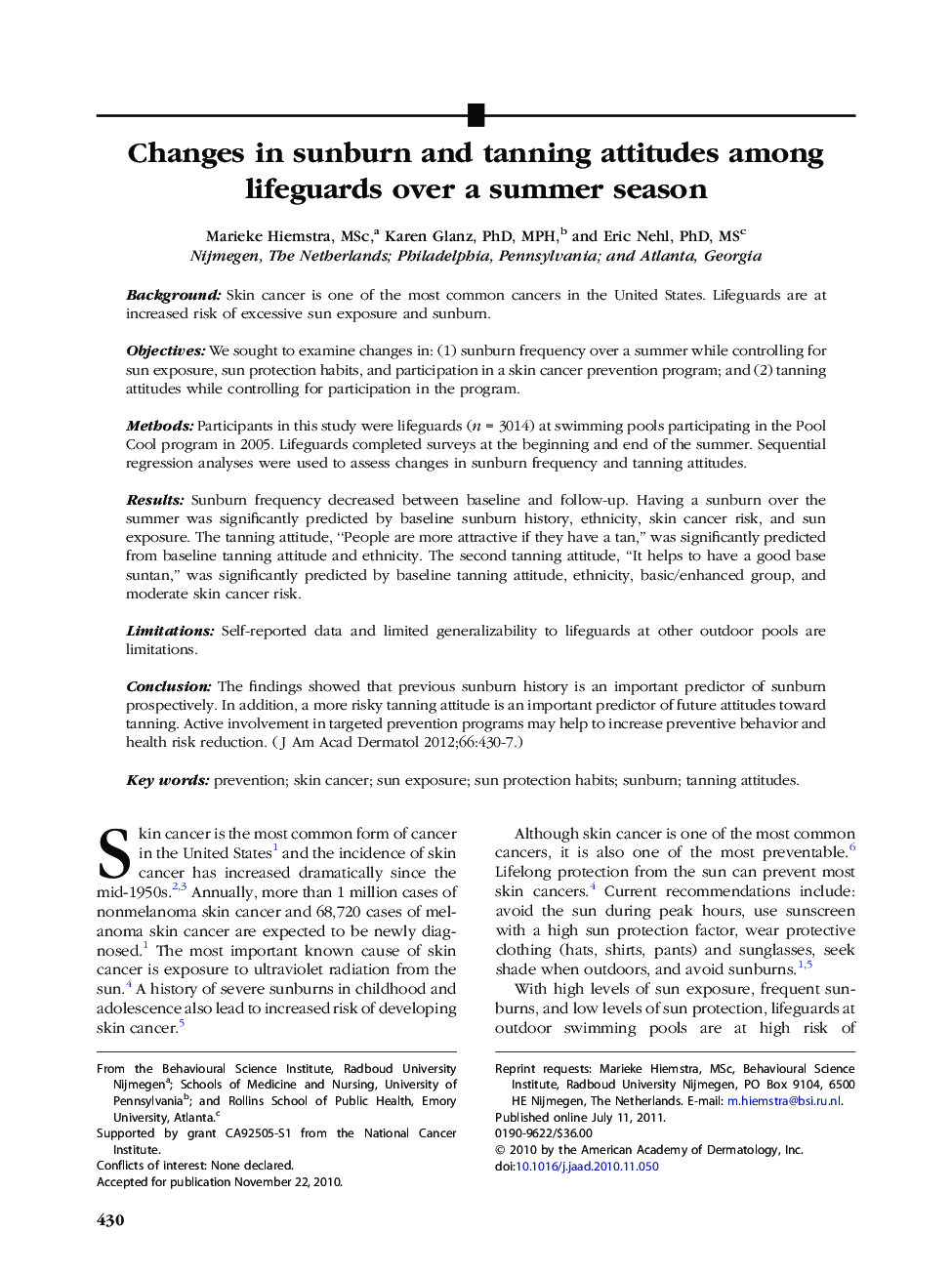| Article ID | Journal | Published Year | Pages | File Type |
|---|---|---|---|---|
| 3207077 | Journal of the American Academy of Dermatology | 2012 | 8 Pages |
BackgroundSkin cancer is one of the most common cancers in the United States. Lifeguards are at increased risk of excessive sun exposure and sunburn.ObjectivesWe sought to examine changes in: (1) sunburn frequency over a summer while controlling for sun exposure, sun protection habits, and participation in a skin cancer prevention program; and (2) tanning attitudes while controlling for participation in the program.MethodsParticipants in this study were lifeguards (n = 3014) at swimming pools participating in the Pool Cool program in 2005. Lifeguards completed surveys at the beginning and end of the summer. Sequential regression analyses were used to assess changes in sunburn frequency and tanning attitudes.ResultsSunburn frequency decreased between baseline and follow-up. Having a sunburn over the summer was significantly predicted by baseline sunburn history, ethnicity, skin cancer risk, and sun exposure. The tanning attitude, “People are more attractive if they have a tan,” was significantly predicted from baseline tanning attitude and ethnicity. The second tanning attitude, “It helps to have a good base suntan,” was significantly predicted by baseline tanning attitude, ethnicity, basic/enhanced group, and moderate skin cancer risk.LimitationsSelf-reported data and limited generalizability to lifeguards at other outdoor pools are limitations.ConclusionThe findings showed that previous sunburn history is an important predictor of sunburn prospectively. In addition, a more risky tanning attitude is an important predictor of future attitudes toward tanning. Active involvement in targeted prevention programs may help to increase preventive behavior and health risk reduction.
